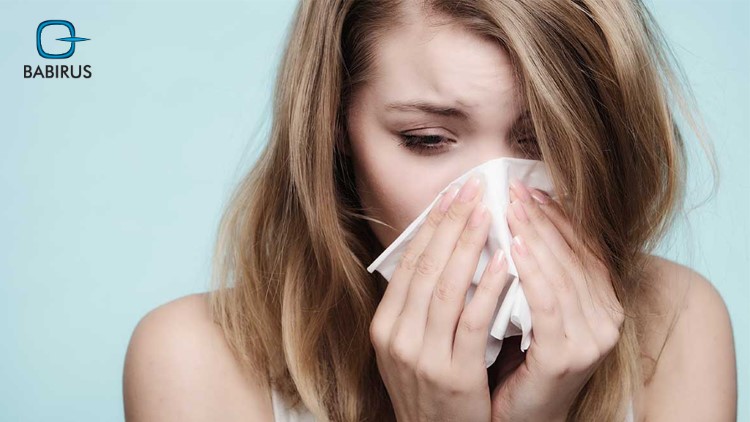Histamine Intolerance

If you are dealing with persistent headaches, unexpected digestive issues, or unexplained skin problems, you may be dealing with histamine intolerance.
That could be a real-life challenge for many people around the world, however, the level of the challenge depends on your body’s reactions toward histamine and how you can find the perfect balance for your lifestyle.
Thus, we are going to share with you insights and details about living normally with histamine intolerance, including its symptoms, causes, diagnosis, and effective strategies for managing daily life perfectly.
Understanding Histamine Intolerance:
But first, let us introduce you to the histamine itself, the histamine is a substance your body naturally produces and plays a vital role in various body functions, including your immune system response, digestion, and even your brain’s communication system.
Moreover, histamine also exists in many foods, particularly aged, fermented, or processed, like aged cheeses, smoked meats, fermented vegetables, and drinks like wine and beer.
However, when talking about histamine intolerance then we are talking about the unnormal reaction from your body toward histamine releases or intake, as normally your body breaks down histamine efficiently with the help of enzymes such as diamine oxidase (DAO) yet in this condition your body will struggle to process histamine properly, leading to symptoms like itching, swelling, or a runny nose.
On the other hand, it is important to understand the difference between histamine intolerance and histamine intoxication, which is a type of food poisoning usually caused by eating spoiled fish.
8 Main Symptoms of Histamine Intolerance:
Histamine intolerance is a condition with many uncomfortable symptoms that could impact different parts of your body, furthermore, these symptoms could differ from one person to another, thus, pay attention to your symptoms and share them with your doctor.
To get the right medical help and be able to manage histamine intolerance symptoms more effectively with the required medication, diet adjusting, and lifestyle changes:
1. Headaches and Migraines:
Suffering from regular headaches or migraines, usually after eating certain foods.
2. Digestive Issues:
Not all these symptoms are a must, but you may experience some of these digestive issues, bloating, diarrhea, nausea, or vomiting depending on your body’s reaction.
3. Skin Problems:
Rashes, hives, itching, and other skin irritations are common skin reactions related to this intolerance condition.
4. Flushing:
Many people tell their doctors that their face or other parts of their body turn red and feel warm.
5. Respiratory Symptoms:
A runny or stuffy nose and shortness of breath could also be considered signs of histamine intolerance.
6. Cardiovascular Effects:
A person may face low blood pressure and an irregular or fast heart rate, which are considered serious symptoms of this intolerance of histamine.
7. Painful Menstruation:
When dealing with intolerance, women may experience more intense and painful menstrual cramps.
8. Swelling:
If you face symptoms like swelling of the lips, tongue, or throat, then you are facing a dangerous symptom that requires immediate medical care.
The Real Causes of Histamine Intolerance:
As we mentioned earlier, histamine intolerance happens when your body struggles to break down histamine due to low levels of DAO enzyme, which could happen due to many reasons:
· Genetics:
Some individuals get genetic variations that lead to reduced DAO production, making it harder for their bodies to process histamine properly, which increases the likelihood of suffering from histamine intolerance.
· Gut Health Issues:
It is a known fact that a healthy gut is vital to maintaining required histamine levels, and any disturbances or issues could lead to disturbing the histamine metabolism process.
· Liver and Kidney Diseases:
Chronic liver conditions like cirrhosis or kidney disease can damage the production of DAO, and affect the organs responsible for detoxifying and processing histamine, leading to an increase in the histamine levels in the body and causing histamine intolerance.
· Medications:
There are certain medications, including antibiotics, blood pressure medications, diuretics, and some painkillers that affect DAO activity or affect histamine metabolism leading to increased histamine levels.
· Age:
Sometimes, when people age, the DAO enzyme production levels could decrease, thus, histamine intolerance is considered more common in individuals over the age of 40.
· Dietary Factors:
Consuming histamine-rich foods can impact the body’s ability to break down histamine, especially if DAO levels are already low, moreover, some foods act as histamine liberators, which boost the release of histamine from mast cells and increase histamine levels.
Steps for Diagnosis of Histamine Intolerance:
Till today, there are no real effective tests to identify and diagnose histamine intolerance, thus, the diagnosing process could be tricky, but, there are many reliable approaches to know if your symptoms are caused by this intolerance type or not:
· Tracking Your Diet and Symptoms:
This is the first step and most effective diagnosing step and is considered an easy one as all you have to do is keep a detailed food diary, that includes all that you eat and drink with any attached symptoms you experience, then share it with your healthcare provider.
This helps in identifying patterns that point to specific histamine-rich foods or combinations of foods and medications that may cause your symptoms, additionally, setting the right treatment strategy for your own condition.
· Allergy Testing:
While histamine intolerance is different from a traditional food allergy, yet, many healthcare providers prefer to perform allergy skin tests or allergy blood tests like the MADx Alex 2 test, to eliminate other conditions.
· Blood Tests:
There are specific blood tests that can measure the levels of histamine and the enzyme diamine oxidase (DAO) in your blood, to find out whether your body is breaking down histamine or not.
· Histamine Skin Prick Test:
This a patient-friendly test and similar to allergy skin tests, it is done by applying a small amount of histamine to your skin to observe your reaction and its duration, as if your skin continues to react after about 50 minutes, then you may be having difficulty processing histamine.
· Histamine Challenge Test:
In some cases, your healthcare provider requests you to take histamine capsules to see how your body reacts, as a way to know if consuming histamine directly causes your symptoms, or if there is another reason behind them.
· Colonoscopy:
A gastroenterologist may perform a colonoscopy to examine your gastrointestinal (GI) tract and take samples, if necessary, to dismiss other GI conditions and assess the levels of histamine or DAO in your intestines, providing more clarity in your intolerance diagnosis.
· Comprehensive Evaluation:
Since this intolerance type can mimic other medical conditions, then having a comprehensive evaluation should be considered, including your medical history, current medications, and any existing health conditions that might affect histamine levels or DAO activity leading to actual diagnosis.
4 Tips for Managing Histamine Intolerance:
Effective management of the intolerance of histamine focuses on reducing histamine intake and supporting the body’s ability to process histamine, with simple yet effective treatment strategies:
1. Dietary Adjustments:
Facing a histamine intolerance with a suitable diet will make your condition more controllable and your life quality better.
This usually involves avoiding histamine-rich foods, identifying personal triggers with a food and symptoms diary, and eating fresh foods that usually have lower histamine levels compared to processed or aged alternatives.
2. Supplementation:
There are many supplements, such as DAO enzyme, and vitamins, like B6 and C, that help your body break down histamine from food, and support histamine metabolism, leading to an enhanced body’s natural ability to manage histamine levels and reduce related intolerance symptoms.
3. Lifestyle Modifications:
All doctors highlight the power of lifestyle changes in managing medical conditions, thus, using stress management techniques like meditation, yoga, and regular exercise, and ensuring suitable sleep quality can help manage histamine levels and support overall health.
4. Medication:
In some cases, doctors prescribe antihistamines to alleviate symptoms, and provide temporary relief, however, to guarantee treatment efficiency it is important to highlight the causes of the condition.
Living with Histamine Intolerance:
Living with histamine intolerance is easy and more than possible, however, you should deal with it as a continuous process that involves:
- Educating Yourself: You need to know which foods and factors impact your histamine levels, so you would be able to make informed decisions about your diet and lifestyle.
- Meal Planning: Preparing meals in advance not only helps maintain a low-histamine diet but also reduces the likelihood of accidental consumption of high-histamine foods and ensures consistent following of dietary guidelines.
- Seeking Support: Connecting with healthcare professionals or support groups with the same medical condition and challenges is vital in providing support, guidance, and comfort based on real-life experiences.
FAQs about Histamine Intolerance:
It is time to answer the most common questions about histamine intolerance by our professionals:
Can Histamine Intolerance Be Cured?
Although there is no permanent cure, yet, many people find significant relief and can effectively manage their symptoms through dietary and lifestyle changes.
Are There Any Low-Histamine Foods I Can Eat?
Yes, maintaining a healthy diet with low-histamine foods is easy and involves eating foods like fresh meats, certain vegetables (e.g., carrots, zucchini), and gluten-free grains to manage symptoms effectively.
How Long Does It Take to See Improvement After Changing the Diet?
This answer totally depends on each individual circumstances, however, usually the improvements can typically be seen within a few weeks of following a low-histamine diet, and keep in mind that consistency is key to observing positive changes.
Is Histamine Intolerance the Same as a Food Allergy?
No, histamine intolerance is your body’s reaction to histamine itself, whereas food allergies involve the immune system reacting to specific proteins in foods, moreover, the two conditions have different primary mechanisms and require different management approaches.
Can Stress Affect Histamine Levels?
Yes, chronic stress can impact enzyme production and histamine regulation, potentially worsening symptoms, therefore, managing stress is an important aspect of controlling histamine intolerance.
One last thought,
Living with histamine intolerance could be easily done without impacting your life quality or activities, yet, you should follow your doctor instructors and suggested diet to reduce your symptoms.
Thus, start making changes today to manage your condition and improve your overall well-being.

